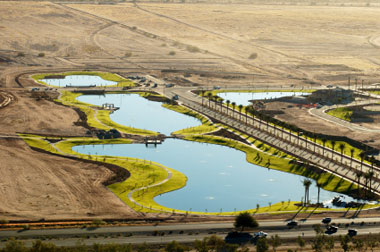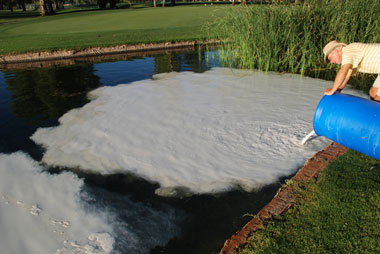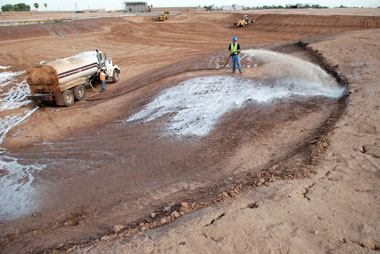Uses of Bentonite an invaluable resource

Bentonite is a naturally occuring clay material which can be used as a lake and pond liner.
Bentonite is a very useful mineral in our society. Usages range from food additives, as a thickener or for enhancing digestion, to sealing lakes and ponds. Bentonite is also used for cat litter, drilling mud in mining, casting in the metal industry, medicines, cosmetics, adhesives, cleansers, detergents, etc., etc. Bentonite is a naturally occurring clay mineral mined largely in Wyoming, Texas, Alabama, and Mississippi as well as many other places throughout the world.
There are two main types of bentonite; sodium and calcium. This difference is important to understand when using bentonite for the purpose of pond liners. Because of the potential for ion exchange with the water the wrong mix can prove unsuitable. When using bentonite as a lake or pond liner the right consulation and construction practices should be used. This can mean the difference between a beautiful pond and and an expensive mud pit.
This website has been launched to help educate the reader about the common methods of using bentonite as a pond liner. Seepage Control, Inc. has been in the business of lake sealing and building pond liners for over 50 years. We are a proponent and manufacturer of ESS-13, an environmental soil sealant, and have been involved with nearly every type of lining system. Sometimes it is necessary to incorporate or even solely use ESS-13 to create a stable, long lasting pond liner. Click here to learn how to build a pond liner using bentonite.
1. Guyonnet, D., Gaucher, E., Gaboriau, H., Pons C.-H., Clinard, C., Norotte, V. Didier, G. 2005. Geosynthetic clay liner interactions with leachate: correlation between permeability, microstructure and surface chemistry. Journal of Geotechnical Engineering, Vol. 131, page740-749.



